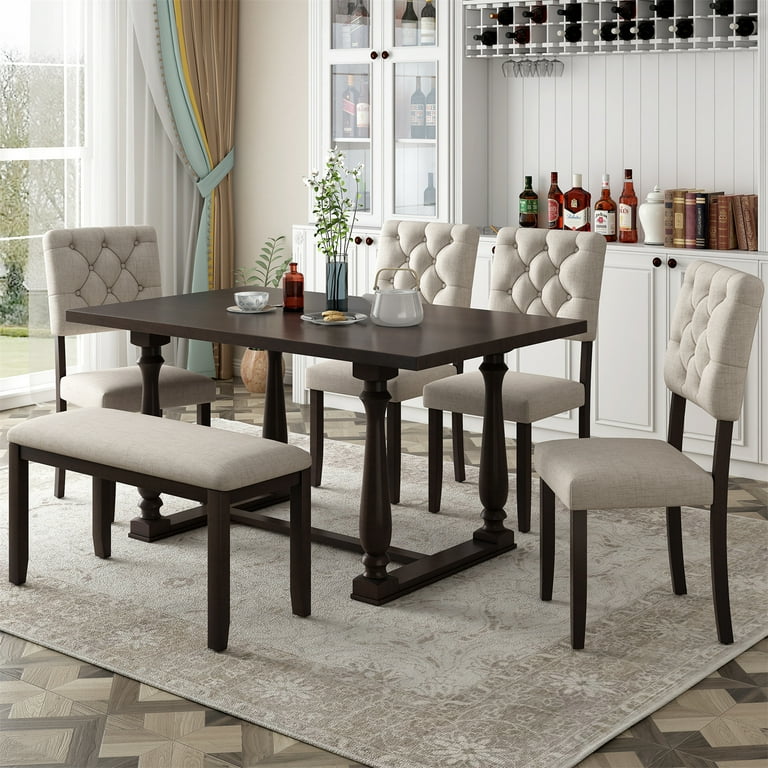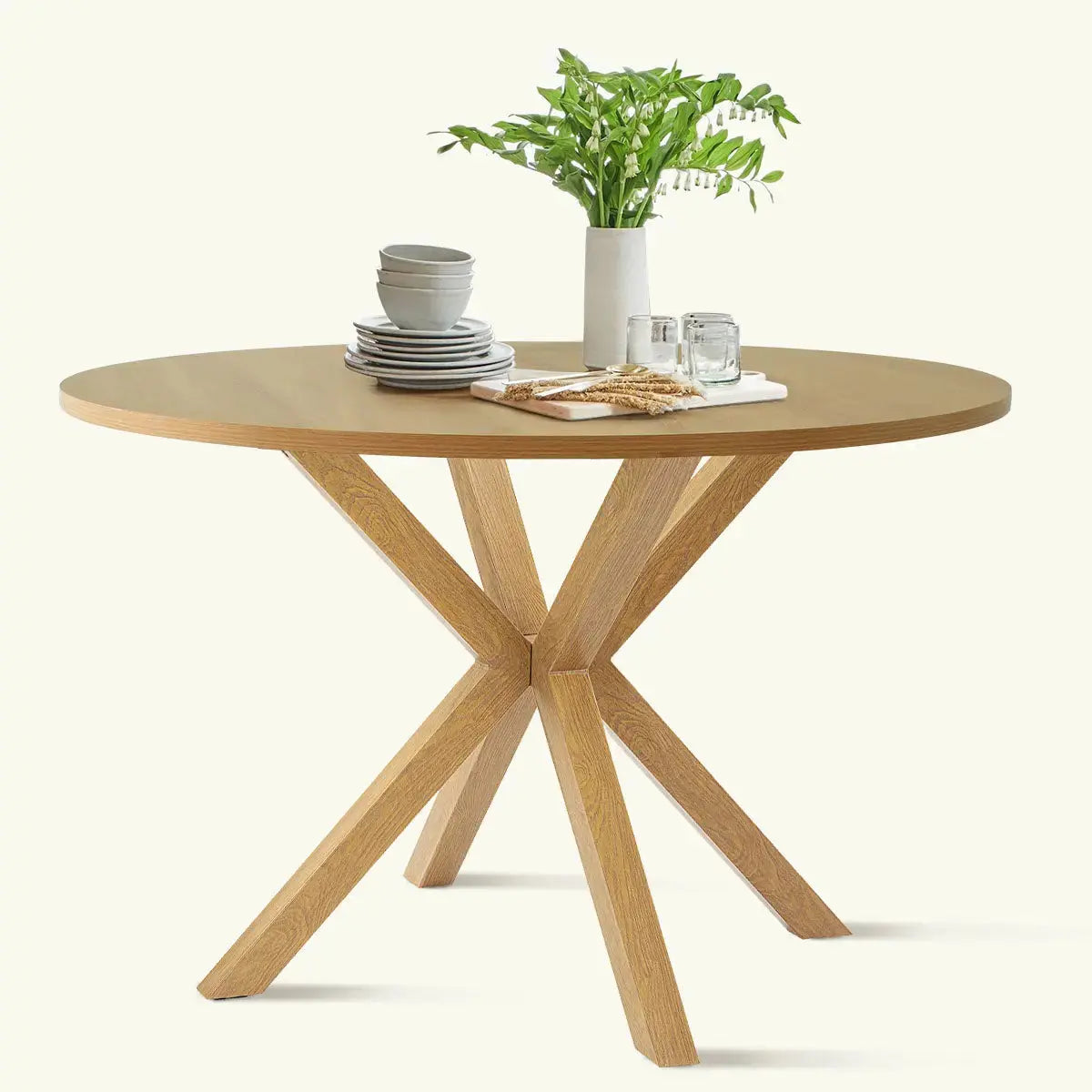Why Dining Room Table Legs Are Crucial for Your Table’s Stability
Why Dining Room Table Legs Are Crucial for Your Table’s Stability
Blog Article
From Conventional to Modern: Locate the Suitable Dining Area Table Legs for Your Style
While timeless layouts such as cabriole and turned legs stimulate a feeling of ageless sophistication, modern designs like hairpin and geometric choices provide a chance for striking visual interest. As you take into consideration these components, the inquiry remains: just how can you seamlessly incorporate these diverse leg designs to create an unified dining experience?
Comprehending Table Leg Styles
The range of dining-room table leg designs can considerably affect both the aesthetics and functionality of the room. Each leg design contributes special sensible features and visual aspects, dealing with diverse design preferences and use needs. Understanding these designs is vital for selecting the best eating table that straightens with your overall interior decoration vision.
For example, conical legs use a clean, classic appearance that can improve an area's style, while stand bases give stability and make best use of legroom, making them ideal for smaller sized spaces. Barrette legs, a trademark of mid-century modern-day layout, present an industrial flair, enabling an airy, open feeling. In a similar way, trestle legs stimulate rustic appeal, giving robust assistance and a sense of timelessness.
Furthermore, the option of materials plays a considerable role. Wood legs can bring heat and appearance, whereas steel alternatives often share a smooth, contemporary ambiance. Ultimately, comprehending table leg designs is important for creating a natural eating location that shows personal design while guaranteeing practicality and convenience. By attentively thinking about these elements, you can boost both the aesthetic and useful appeal of your dining space.
Typical Table Leg Options
When picking eating room table legs, traditional alternatives frequently symbolize timeless elegance and craftsmanship. These styles show a rich heritage and a dedication to top quality, making them excellent for those who appreciate traditional visual appeals.
One of the most iconic conventional leg styles is the cabriole leg, characterized by its elegant bent shape. This layout often features attractive makings and is most generally located in Queen Anne and Chippendale furniture. Another popular option is the turned leg, which flaunts a series of smooth, rounded forms that supply a timeless look while maintaining security.
Additionally, the straight leg, while simple, supplies a tough and unadorned structure that can blend seamlessly with a variety of tabletop styles. For those drawn to ornate outlining, claw-and-ball feet legs evoke a sense of majesty and can work as a magnificent focal factor in any type of eating space.
Lastly, pedestal bases, although not purely legs, supply a different typical choice that permits enough legroom and can be wonderfully carved. Each of these typical leg styles adds to the overall setting of a dining-room, marrying function with aesthetic allure.

Modern Table Leg Layouts
Modern table leg layouts use a diverse array of styles that highlight ingenious products and clean lines. These designs frequently prioritize functionality while serving as striking centerpieces within a dining area. Minimal visual appeals prevail, with legs crafted from materials such as metal, glass, and engineered wood, which add to a airy and contemporary feel.
One prominent layout is the hairpin leg, defined by its slim, conical framework that provides security without frustrating the tabletop (dining room table legs). This design is commonly discovered in mid-century modern furniture and can easily match different dining table shapes. An additional pattern is using geometric forms, where legs might handle unbalanced or angular forms, adding aesthetic interest this post and a touch of virtuosity

Blending Styles for Special Areas
Usually, homeowners seek to develop unique eating areas that show their individual design by mixing numerous design aspects. This approach permits the consolidation of varied aesthetic appeals, causing a harmonious yet distinct atmosphere. For circumstances, combining a rustic wooden table with sleek, modern-day steel legs can create an eye-catching contrast that boosts the area's general allure.
Additionally, integrating vintage table legs with contemporary table tops can evoke a sense of history while preserving a modern perceptiveness. Such mixes not just showcase specific taste but additionally urge creative thinking, allowing property owners to curate a room that really feels both personal and inviting.
Shade plays a vital function in this mixing process; selecting table legs that complement or comparison with the existing color design can improve visual rate of interest. For instance, whitewashed legs can soften the boldness of a dark table surface area, creating a balanced aesthetic.
Tips for Selecting the Right Legs
Selecting the right table legs is necessary for accomplishing both performance and visual appeal in your eating space. Begin by taking into consideration the total style of your area. Typical settings gain from legs that include complex carvings or transformed designs, while modern rooms might ask for sleek, minimal designs.
Following, assess the elevation and security of the legs. dining room table legs. Typical table vary in between 28 to 30 inches in elevation, so make certain the legs complement this measurement for convenience. In addition, robust products, such as wood or metal, can improve stability and longevity
Review the leg form too-- options include directly, tapered, or stand designs. Straight legs use a timeless appearance, while conical legs can include a touch of style. Pedestal bases offer ample legroom and are perfect for smaller spaces.
Conclusion
In recap, choosing the ideal dining room table legs calls for cautious factor to consider of both conventional and contemporary designs. By harmonizing leg style, height, and material with the general décor, a cohesive and welcoming atmosphere can be accomplished.
The range of eating space table leg styles can dramatically influence both the check here appearances and capability of the room. Eventually, understanding table leg styles is important for producing a natural dining location that mirrors personal style while guaranteeing practicality and comfort.One of the most legendary traditional leg designs is the cabriole leg, identified hop over to these guys by its elegant rounded shape. Straight legs use a classic look, while tapered legs can include a touch of beauty.In recap, selecting the ideal eating space table legs requires careful factor to consider of both typical and contemporary designs.
Report this page